Made a start on this for you guys. I am aware I need to do more work on it so will add to this post as I go. First step is Z77. I will be covering X79 in future and Z87 on release too.
For Z77 I am going to cover ASUS and Gigabyte boards as most users on these use these manufacturers. There is no reason the timings would not transfer to other bios such as MSI and ASROCK. I am covering PSC, Samsung and Hynix IC also as almost all overclocking RAM is one of these IC.
What IC are your DIMMS?? This can be difficult to spot but here is a basic guide to this.
PSC Dimms are usually 2gb sticks that slope up then down sharply at XMP timings. Usually like 6-8-6 at 1600mhz, 9-10-9 at 2000mhz or similar. With PSC CL usually equals TRP. These DIMMS scale well with high voltage and cold.
Hynix DIMMS are usually 4gb sticks slope up then down slightly. Hynix standard timings are usually 2133 9-11-10-28 at 2133. Hynix scale well with Volts and cold.
Samsung DIMMS are usually 4gb sticks the timings on these sticks are up and then flatten out. So 10-12-12 at 2400mhz is a good example. Samsung scale with volts to around 1.75 and like to be chilled but not sub zero.
Samsung and Hynix can be easily mixed. The best way to differentiate between the two is set TRAS 21. If its stable then the sticks are Samsung.
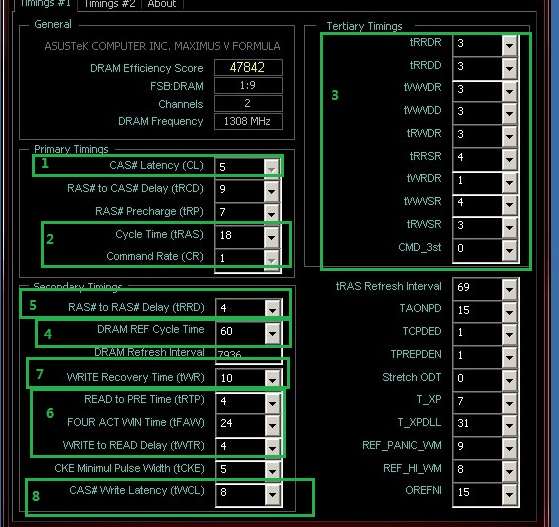
When tuning follow the simple diagram above which shows which timings you should try to reduce to gain performance. The number next to the timing indicates the order of importance e.g CL first then tune Tras etc etc. For values Like TRFC try the following when tuning 160, 150, 148,128,124,114,107,96,88 and finally 74. Stop moving down if the dimms refuse to boot or are not stable through memtest and windows.
For stability test initially with Memtest focusing mainly on Tests 2 and 5 if time is a premium. Then in Windows use Pi 32mb and Prime blend for a short period before using the PC.
Here we have PSC Overclocking bench tuned results on Giga and ASUS. For these tests the CPU is on standard Air cooling as is the RAM. I am going to put this set of PSC on LN2 also later to show how the cold improves PSC. I am hoping for C6-11 or 10 -7-24 1T 74 TRFC at 2600+
PSC DDR 2566 C8
ASUS
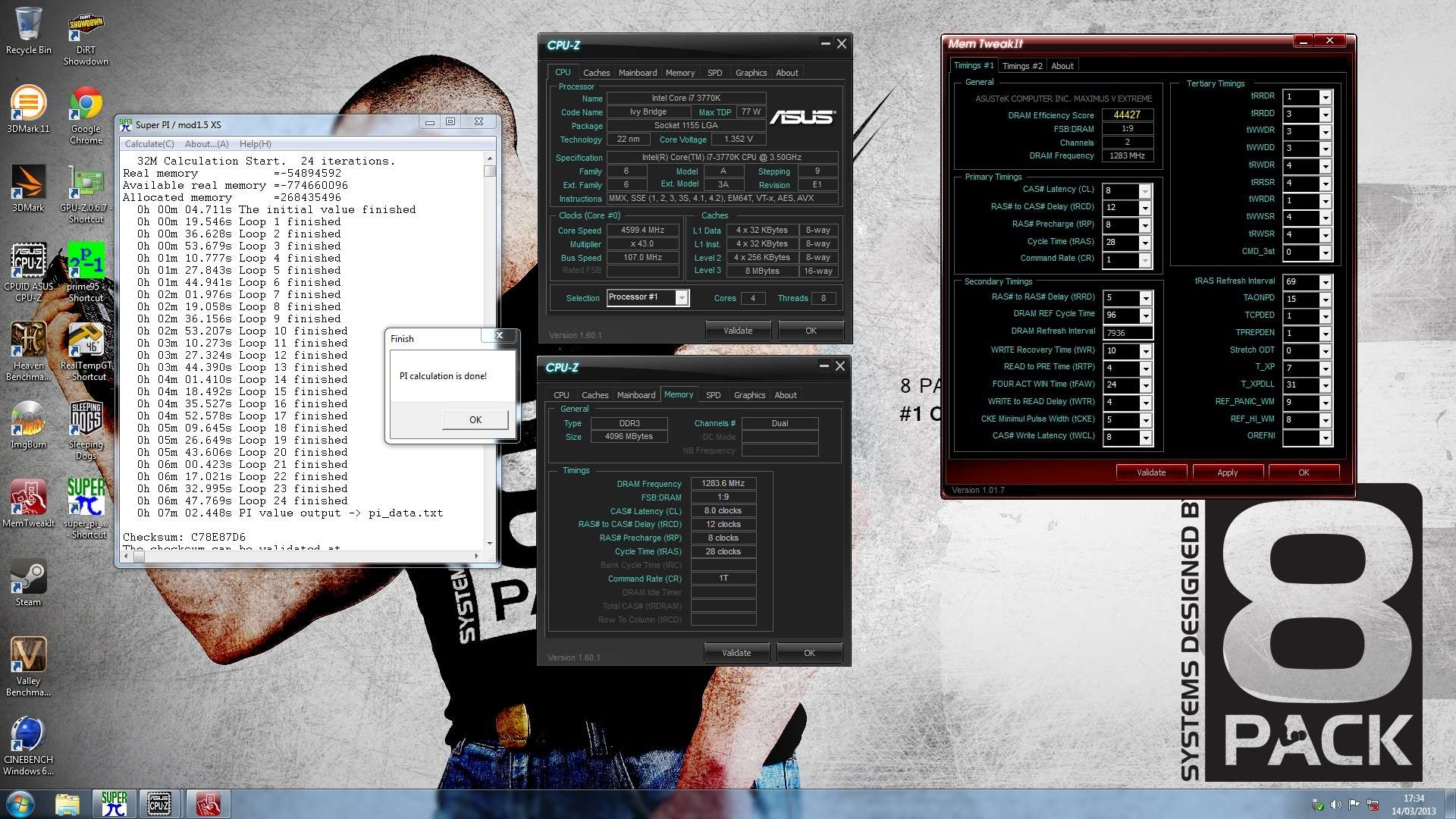
GIGA
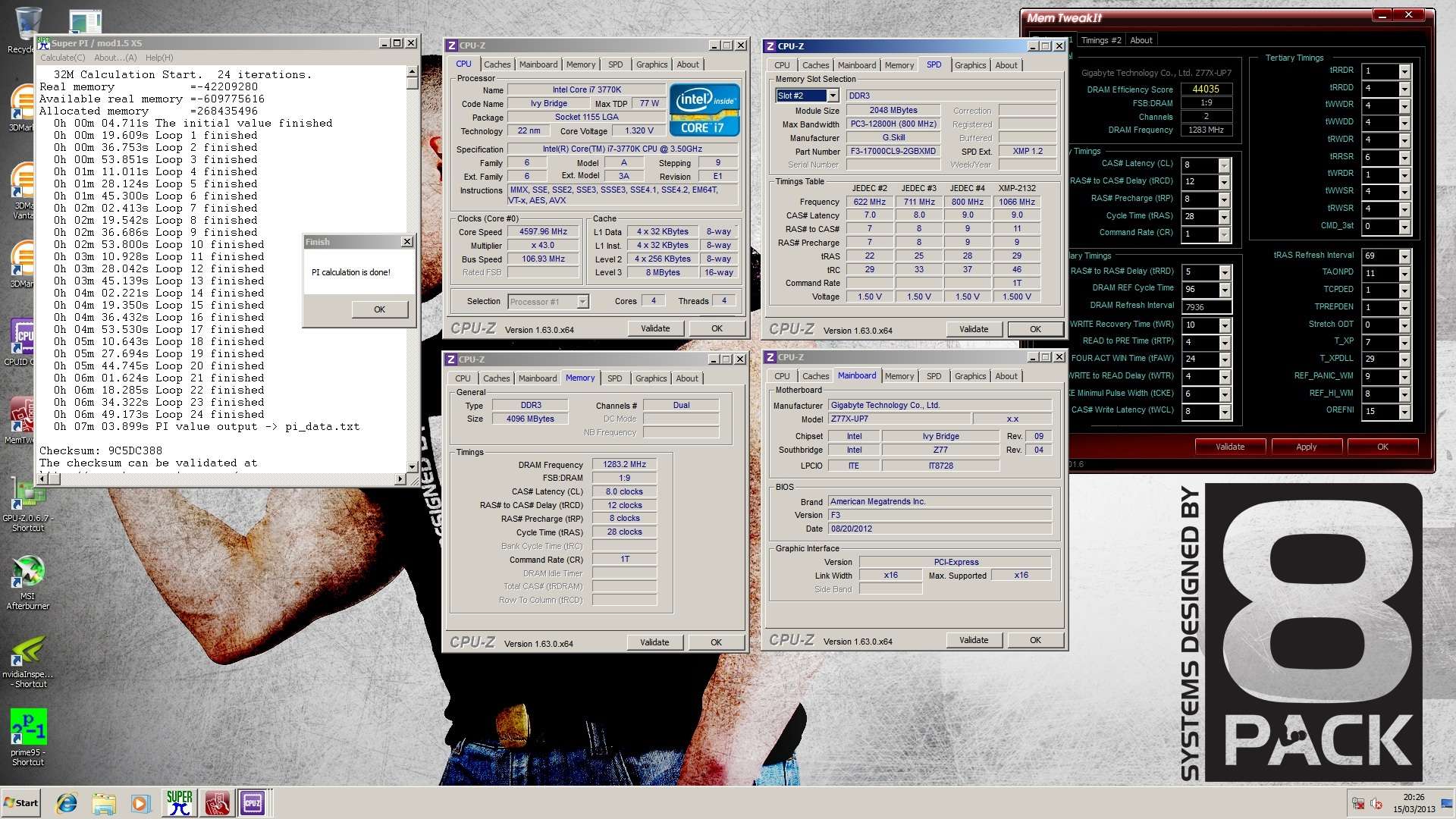
Samsung (Green) DDR 2456 C9
ASUS
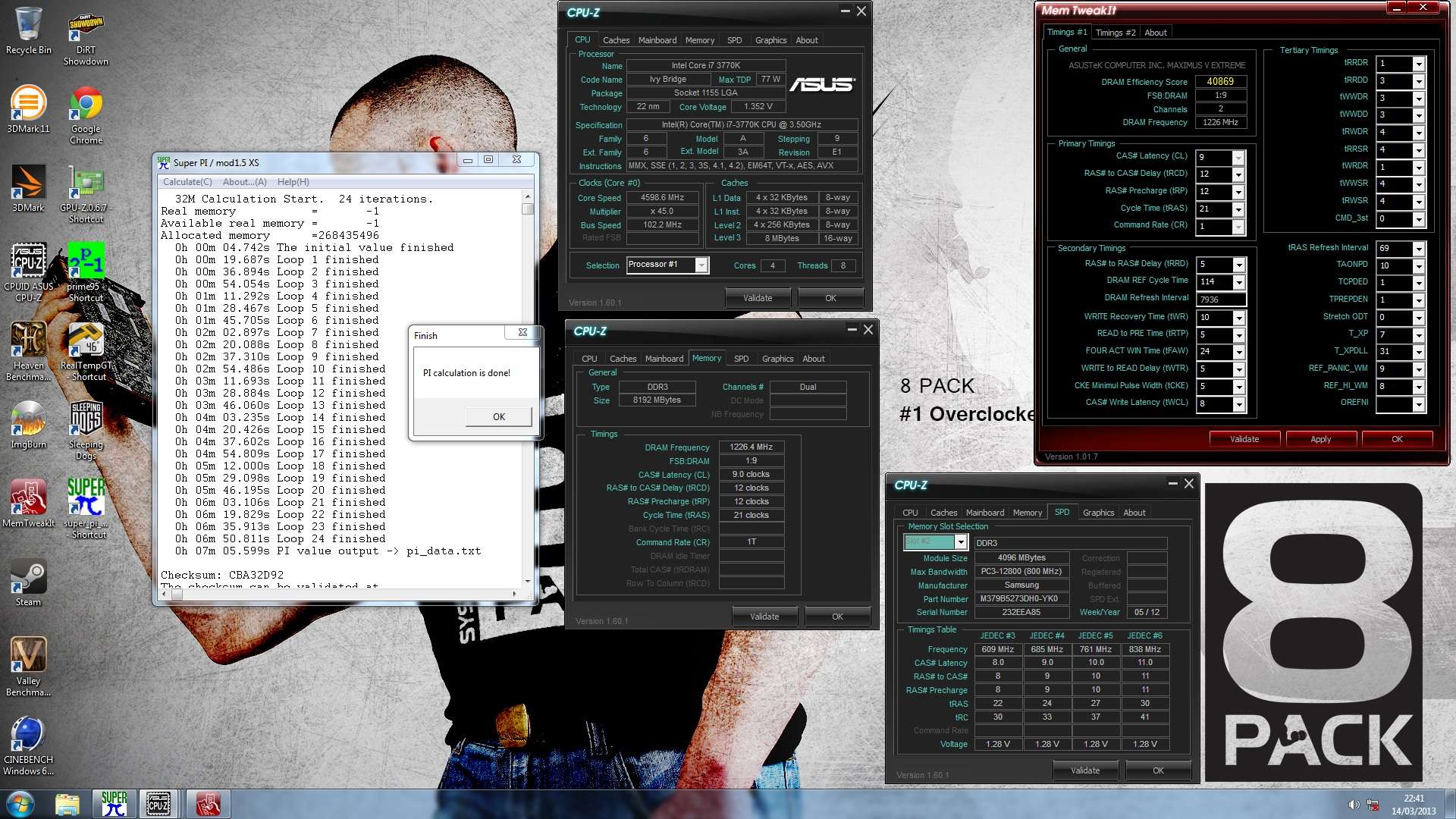
GIGA (To follow)
Hynix at DDR 2600 C10 and 2780 C11
ASUS
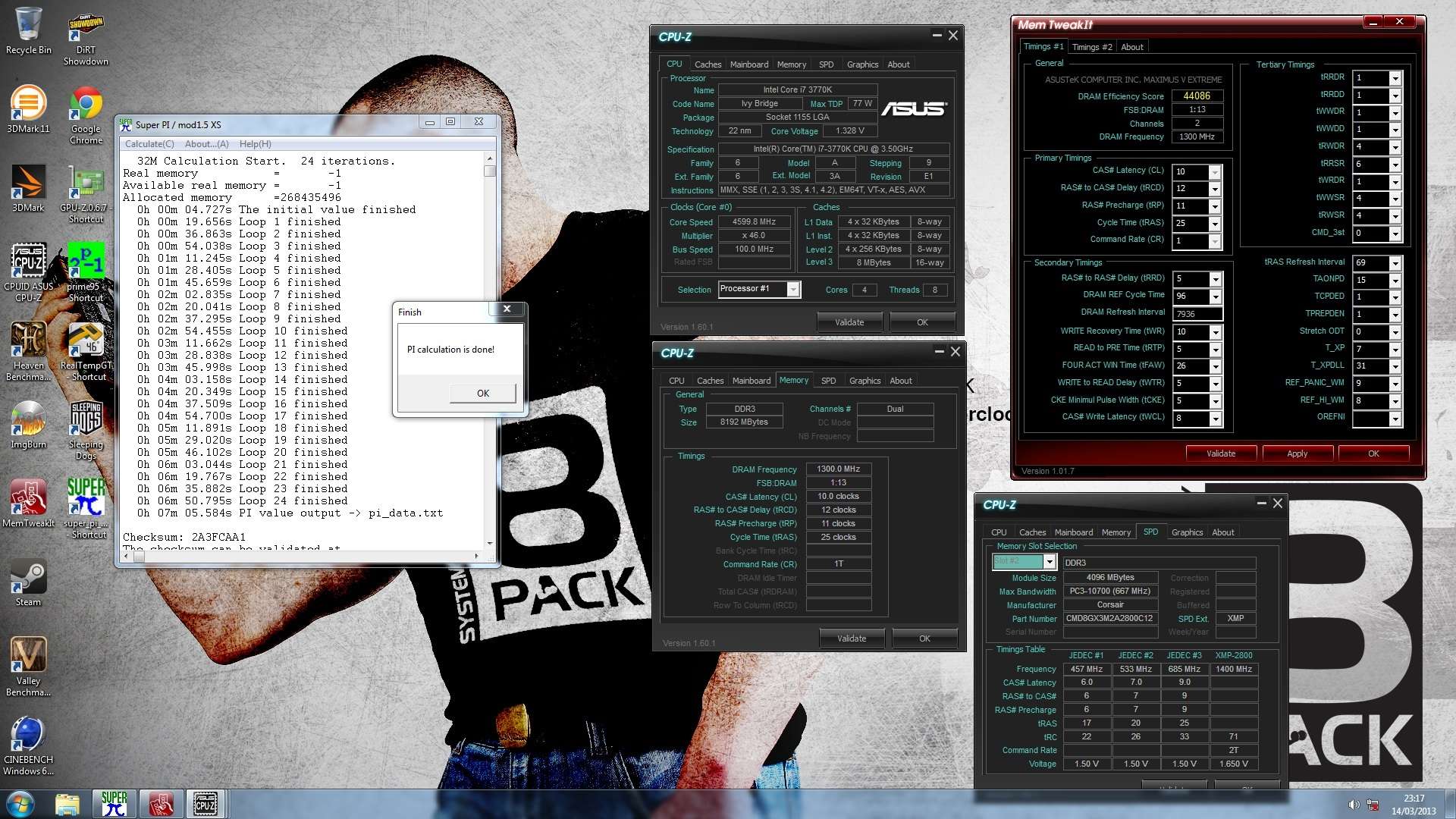

GIGA (To follow)
LN2 PSC to follow.
As you can see I have much to do on this including X79 but I thought I would make a start. Any questions comments please ask.
For Z77 I am going to cover ASUS and Gigabyte boards as most users on these use these manufacturers. There is no reason the timings would not transfer to other bios such as MSI and ASROCK. I am covering PSC, Samsung and Hynix IC also as almost all overclocking RAM is one of these IC.
What IC are your DIMMS?? This can be difficult to spot but here is a basic guide to this.
PSC Dimms are usually 2gb sticks that slope up then down sharply at XMP timings. Usually like 6-8-6 at 1600mhz, 9-10-9 at 2000mhz or similar. With PSC CL usually equals TRP. These DIMMS scale well with high voltage and cold.
Hynix DIMMS are usually 4gb sticks slope up then down slightly. Hynix standard timings are usually 2133 9-11-10-28 at 2133. Hynix scale well with Volts and cold.
Samsung DIMMS are usually 4gb sticks the timings on these sticks are up and then flatten out. So 10-12-12 at 2400mhz is a good example. Samsung scale with volts to around 1.75 and like to be chilled but not sub zero.
Samsung and Hynix can be easily mixed. The best way to differentiate between the two is set TRAS 21. If its stable then the sticks are Samsung.

When tuning follow the simple diagram above which shows which timings you should try to reduce to gain performance. The number next to the timing indicates the order of importance e.g CL first then tune Tras etc etc. For values Like TRFC try the following when tuning 160, 150, 148,128,124,114,107,96,88 and finally 74. Stop moving down if the dimms refuse to boot or are not stable through memtest and windows.
For stability test initially with Memtest focusing mainly on Tests 2 and 5 if time is a premium. Then in Windows use Pi 32mb and Prime blend for a short period before using the PC.
Here we have PSC Overclocking bench tuned results on Giga and ASUS. For these tests the CPU is on standard Air cooling as is the RAM. I am going to put this set of PSC on LN2 also later to show how the cold improves PSC. I am hoping for C6-11 or 10 -7-24 1T 74 TRFC at 2600+
PSC DDR 2566 C8
ASUS

GIGA

Samsung (Green) DDR 2456 C9
ASUS

GIGA (To follow)
Hynix at DDR 2600 C10 and 2780 C11
ASUS


GIGA (To follow)
LN2 PSC to follow.
As you can see I have much to do on this including X79 but I thought I would make a start. Any questions comments please ask.


